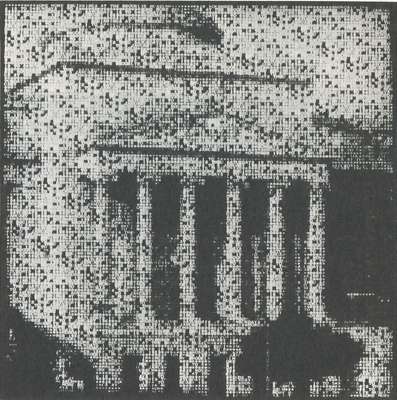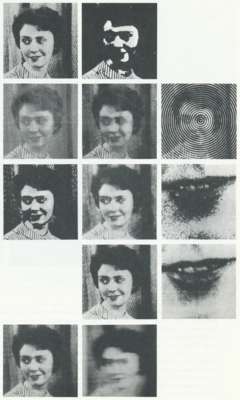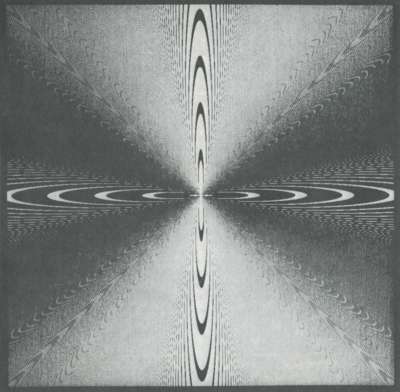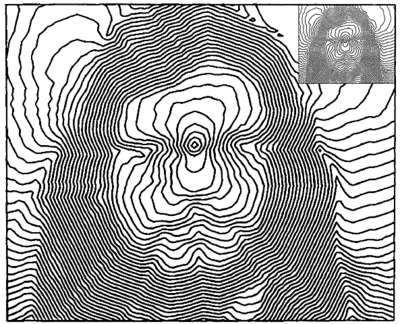Manfred Robert Schröder was a German physicist, most known for his contributions to acoustics and computer graphics. He has written three books, published over 150 articles in his field and has recieved 45 U.S. patents.
He became interested in computer graphics during his time as the director of the Acoustics and Speech Research Laboratory at the Bell Labs. Working with Leon Harmon and Knowlton, Ken with the goal of using computers for creating images that could not otherwise be drawn or painted.His aim was to generate pictures that would be perceived as totally different depending on the viewing distance. His prize-winning ‘One Picture is Worth a Thousand Words’ looked like printed letters and English text from nearby but from a further viewing distances ir resembled a human eye.
Several of his computer graphics are based on number-theoretic relationships and prime numbers. Under Harmon, Leon’s influence he soon became interested in computer graphics for purely artistic purposes along with Noll, A. Michael and Julesz, Bela .
He had also designed the poster for the Brooklyn Museum show “Some More Beginnings—Experiments in Art and Technology” which displayed the entrance to the museum composed of text announcing the show.
He had invented the voice-excited vocoder (VEV), the first vocoder that eschewed the customary electronic accent of synthetic speech.
His research with Bishnu Atal resulted in linear predictive coding (LPC), which has become the method of choice for digital speech coding. By introducing the properties of the human ear into speech coders, high-quality speech at very low bit rates was achieved.
His use of digital computers as a signal generator and electronic filter allowed him, Gerhard Sessler, and James West to perform precise measurements, closely tailored to human perception, of the acoustical properties of Philharmonic Hall at Lincoln Center for the Performing Arts, New York, and other enclosures.







